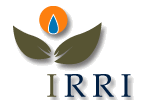
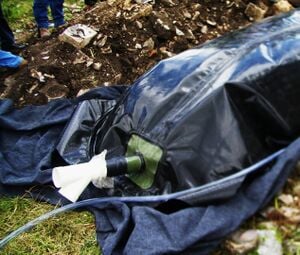

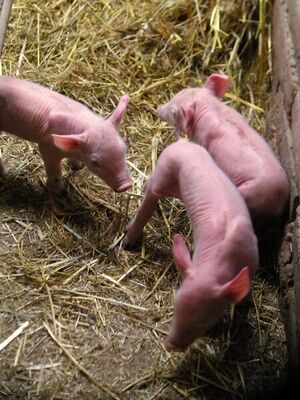
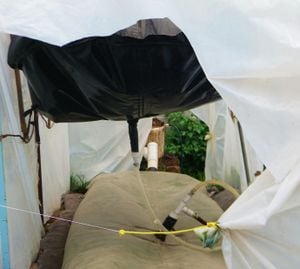
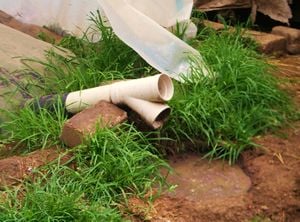
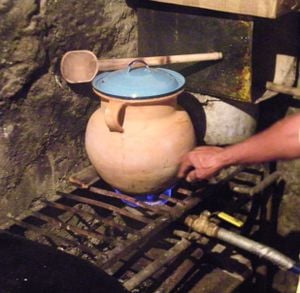
Intro
Testing biodigester effluent (or biol) is important in order to know how effective biodigesters work as a waste management solution for improving water quality. A lot of animal waste ends up untreated and in rivers causing problems of algal blooms, reduced oxygen availability for other living organisms like fish and plants, and can cause serious health issues in humans.
Testing biodigester effluent is also important in order to know how effective it is as a fertilizer. Many farmers rely on manure from their animals and biodigesters take this animal manure to produce gas. Making sure the resulting biodigester effluent can also be used as a fertilizer with equal or better results to that of traditional or commonly used fertilizers is extremely important to insuring that the biodigester can become an integrated addition to the farm.
Background
The following testing was conducted by the International Renewable Resources Institute and Biobolsa in order to test their biodidgester systems water quality and fertilizer applicability.
Fertilizer Quality Expectations
Soil Basics
Soil is a complicated matrix of many minerals and nutrients not completely understood by science, the following is a break down of what is understood thus far. Soil is composed of a balance of at least 6 macro and 6 micro elements. The 6 macro elements are nitrogen(N), phosphorous(P), potassium (K), calcium, magnesium, and sulphur. The 6 micro elements are iron, maganese, boron, copper, zinc, and molybdenum. [1] This list is continually extended as new minerals and exiting minerals and micro nutrients roles within soil are better understood by science.
There are different N:P:K ratio’s recommended specific for each crop and for different stages of growth including: seedlings stage, vegetative stage, and flowering and fruiting stages. So your soil and fertilizer mix should change depending on the plant and the stage its in.
Different Nutrients and Their Functions for Plants
6 Macro Elements
1.Nitrogen (N)=
- is found in chlorophyll and protoplasm in plants and is an important component in proteins.
- Excess nitrogen shows as lush soft growth.
- Deficiency shows as a shortening of stems and yellowing of leaves.
- Plants that are high nitrogen feeders include: squash, cabbage, broccoli and corn.
Bioavailable Nitrogen
- Nitrates, NO3-,
nitrates are transformed from nitrites, NO2-, by nitrifying bacteria. Both nitrates and nitrites can easily leach from the soil.
- Ammonium , NH4+,
Ammonium is the preferred form by plants for uptake and is less able to leach from the soil, however it is very volatile and can easily escape in aerobic environments before fixation.
- Organic nitrogen like:
- Urea, (NH2)2CO, urea is produced in the body principally for nitrogen excretion and urea contains about 88 percent of the N (nitrogen), up to 67 percent of the P (phosphorus) and up to 71 percent of the K (potassium) present in human excreta. [2]
2.Phosphorous (Ph)=
- makes up the structural framework of RNA and DNA, is used to transport cellular energy biological organisms, and forms into phospholipids to become the main structural component of cell membranes.
- Excess phosphorous can interfere with plant uptake of copper and zinc.
- Deficiency of phosphorous creates thick small cells, when looking at the new growth at the tips of the leaves this may look like fungus to some.
- Phosphorous is not found free in nature, but is excavated from minerals, rivers passing over rock with these minerals or rain coming in contact with these minerals helps erode the rock and release this phosphorous to be used by biological organisms. In 2008 based on the rates of excavation, scientists claimed that “Peak Phosphorous”, where phosphorous reserves run out, could occur within 30 years due to the increasing use of crop based biofuels. This has been reflected in the skyrocketing cost, where the raw material of phosphate has increased by 700 percent to the price of $367 per tonne. [3]
3.Potassium (K)=
- helps activate 60 different enzymes involved in plant growth, it helps stabilize the pH between 7 & 8, regulates the opening and closing of stomats, thus also regulating the exchange of CO2, water vapor, and oxygen essential for photosynthesis, water and nutrient transport, and plant cooling. It also helps regulate the transport of sugars, the synthesis of starch, and the synthesis of proteins. [4]
- Excess can induce a magnesium deficiency and micro nutrient deficiencies in iron and zinc. [5] [6]
- Deficiencies may result in leaves turning purple, stunted plant growth, and delay in plant development. [7]
4.Calcium (Ca) =
- is essential for growth and cell structure in plants as well as acting as a secondary messenger for plant uptake and plant responses to environmental conditions. Without calcium plant cell membranes deteriorate. [8]
- Excess may cause deficiency in magnesium or potassium.
- Deficiency may cause reduced growth or death of leaf tips; blossom-end rot of tomato; and poor fruit development.[9]
- Calcium is removed by salinization (or salt) in drylands and deserts. Over irrigation in drylands causes irrigation water to evaporate, leaving behind increased amounts of salts. When this sodium is present in soils it suppresses the uptake of calcium by plants.[10]
5.Magnesium (Mg)=
- is essential to forming basic nucleic acids and thus essential to all cells of all known living organisms. 300 enzymes rely on the presence of Mg for catalysis including synthesis and utilization of ATP, DNA, and RNA. Magnesium is also an important component in chlorophyll.
- Excess in imbalance with calcium and potassium may reduce growth. Look at the table below for balancing the major ions in soil.
- Deficiency results in the yellowing of leaves between leaf veins and poor fruit development and production. [11]
6.Sulphur=
- important polypeptides, proteins, and enzymes are made of amino acids containing sulfur. Sulfur also helps form disulfide bonds (S-S bonds), which plays an important role in the folding and stability of some proteins.
- Excess can cause premature dropping of leaves and harmful changes in the metabolism of plant cells.[12]
- Deficiency have yellow leaves, produce fewer seeds and appear to be more susceptible to disease, with similar symptoms to nitrogen deficiency however the effects occur on new growth. [13]
6 Micro Elements
1.iron,
2.maganese,
3.boron,
4.copper,
5.zinc,
6.molybdenum,
Balancing Proportions between Major Ions in Soil:
| Major Ions in Soil | Proportion | Notes |
| Calcium, Ca | 50 | |
| Magnesium | 35 | add Epsom salt or dolomite if Mg deficient |
| Potassium, K | 6 | adding K increases Na |
| Sodium, Na | 5 | Na displaces Ca |
Fruit and Veggies susceptible to Certain Nutrient Deficiencies
| Nutrient | Fruits and Veggies susceptible to deficiencies | |
| Mg | tomato plants and apple trees |
Nitrogen, Potassium, and Phosphorous values for different Fruits and Veggies
| Fruits and Veggies | Needed Nitrogen | Needed Potassium | Needed Phosphorous |
References
- ↑ Dudley Harris. Hydroponics: the complete guide to gardening without soil. Struik, 1992
- ↑ Drangert, JO. Fighting the Urine Blindness to Provide more Sanitation Options. Water SA. Vol 24, No 2. April, 1998. http://www2.gtz.de/Dokumente/oe44/ecosan/en-fighting-urine-blindness-1998.pdf
- ↑ Leo Lewis. Scientists warn of lack of vital phosphorus as biofuels raise demand. The Times. June 23, 2008.
- ↑ International Plant Nutrition Institute. Functions of Potassium in Plants. Better Crops with Plant Food. http://www.ipni.net/ppiweb/bcrops.nsf/$webindex/84CBB51751971AB3852568F000673A10/$file/98-3p04.pdf
- ↑ Thomas Marler, Frank Cruz and James McConnell. Essential Plant Nutrients. College of Agriculture and Life Sciences, University of Guam
- ↑ Joe Traynor. Ideas in Soil and Plant Nutrition. 1980. Kovak Books, Bakersfield, CA.
- ↑ Thomas Marler, Frank Cruz and James McConnell. Essential Plant Nutrients. College of Agriculture and Life Sciences, University of Guam
- ↑ Greg Patterson. Calcium Nutrition in Plants. Certified Crop Advisor.
- ↑ Thomas Marler, Frank Cruz and James McConnell. Essential Plant Nutrients. College of Agriculture and Life Sciences, University of Guam
- ↑ Mollison, Bill. Permaculture a Designers Manual. Tagari, 1988.Pg 190- 198.
- ↑ Thomas Marler, Frank Cruz and James McConnell. Essential Plant Nutrients. College of Agriculture and Life Sciences, University of Guam
- ↑ H Rennenberg. The Fate of Excess Sulfur in Higher Plants. Annual Review of Plant Physiology Vol. 35: 121-153 (Volume publication date June 1984).
- ↑ Thomas Marler, Frank Cruz and James McConnell. Essential Plant Nutrients. College of Agriculture and Life Sciences, University of Guam
- ↑ Mollison, Bill. Permaculture a Designers Manual. Tagari, 1988.Pg 190- 198.